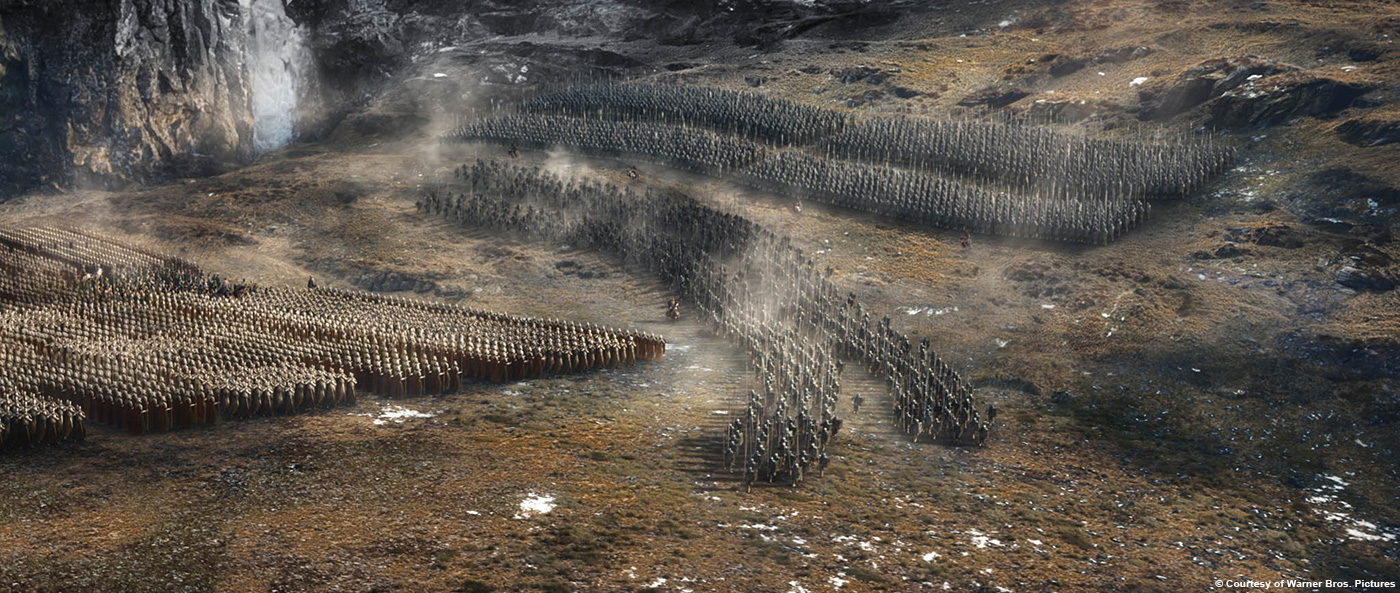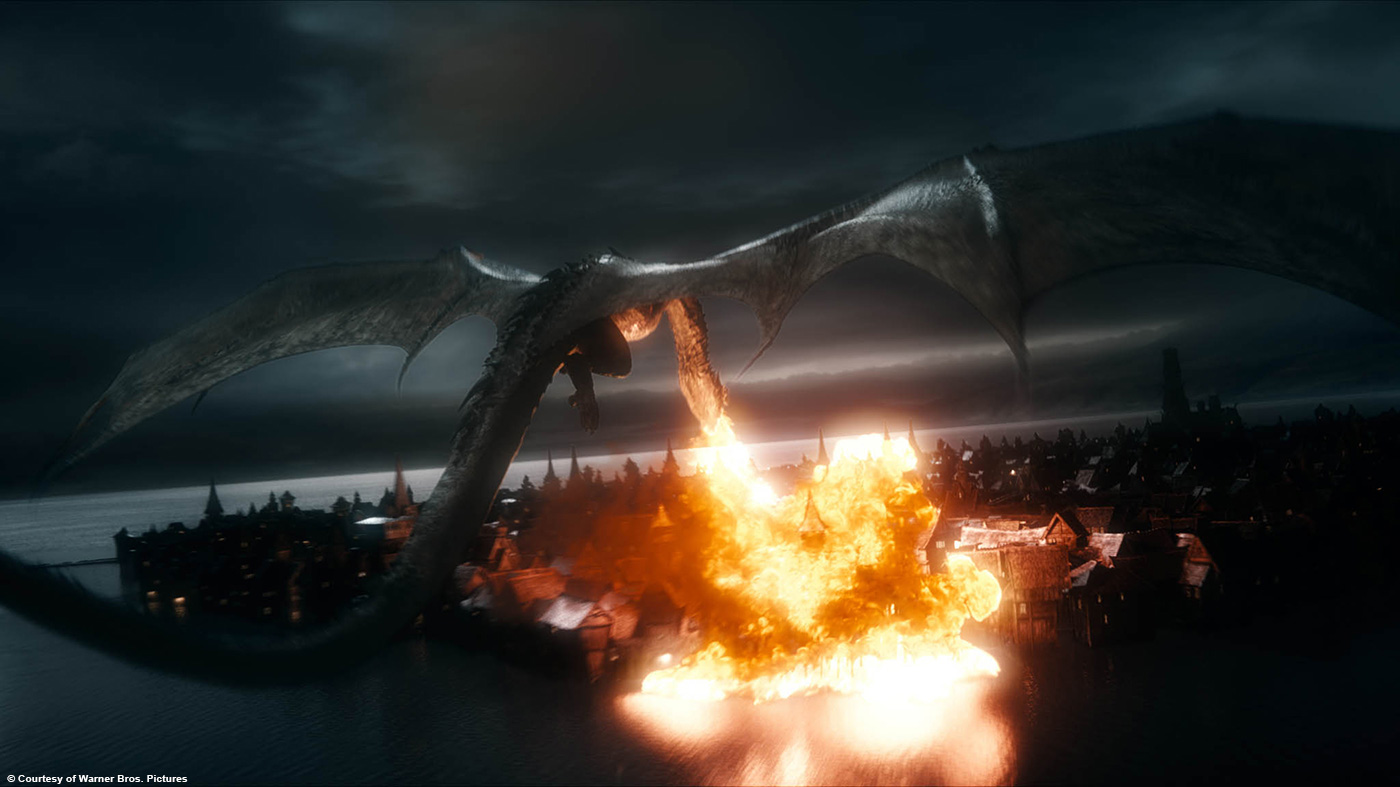Before joining the team of Weta Digital in 2006, Mike Cozens worked at Hybride on projects such as SIN CITY or 300. At Weta Digital, he worked on AVATAR, RISE OF THE PLANET OF THE APES or the trilogy THE HOBBIT.
What is your background?
My father was at Art Center in LA in the 60’s. When he was there he lived with Marv Newland, an animator who later formed International Rocketship. My passion for film and animation came from all the media I was surrounded by growing up in the 70’s and 80’s. Everything from SUPERFRIENDS to ALIEN. But the inspiration to animate came from seeing Marv’s work on screen. He made the process accessible. I went to Vancouver Film School to study Animation in the late 90’s. My first job as an animator was in Montreal working on the film KAENA: THE PROPHECY with a bunch of very cool French animators.
How was this new collaboration with director Peter Jackson?
It was very exciting to be working with Peter. It was hard work and I feel like learned a lot during the process. I learned things like finding the heart of a performance, connecting a shot to the larger picture, storytelling inside a shot and across a sequence and much more.
Did you received any specific indications from him?
Yes. Constantly. We worked very hard to create choreography for the battalions of troops so that the audience would read the larger army movements. This process began with the choreography done on the motion capture stage using a small team of performers. We took these smaller pieces of captured choreography and in the motion edit department combined multiple takes of choreography until we had built large sections of fighting, formations or troop movement. These would be used later in the final shot. Because of the size of these files we also converted the motion into lightweight bakes using a tool called Army Manager. Using this tool we could previs and block very large numbers of troops to give Peter ideas for the large picture of the battle. Peter didn’t want the battle to decay too quickly into hand to hand combat. He wanted the formations to tell a story. Each army had its own character/personality, and it was crucial that we made this bit of storytelling read. For example, the Orc force needed to be a thinking, sociopathic villain. This was achieved this by showing them moving into their different formations and responding to Azog’s orders from up on Ravenhill.
What was your approach on this final The Hobbit episode?
During the final sequence of the second film DESOLATION OF SMAUG we key framed long pieces of performance for Smaug that were sent to the motion capture stage where Peter could virtually shoot cameras on the action. We used the same technique for BO5A except that we had many more characters in the scenes. Instead of Smaug and a few Dwarves we had to generate enough motion so that when Peter put his camera in the middle of it that it felt like he was in the middle of a battle. The motion also had to be high quality so that if he framed up on a sword swing or marching feet his framing, the timing and the action was not going to change drastically when we took those shots back into Animation to final. We used a combination of motion capture and key framed motion to create these fight vignettes. With the highest quality animation at the centre of the action out to the edges where the detail was not as precise. At the beginning both Aaron Gilman (Animation Supervisor) and I were a little nervous about the amount of characters that we needed to get into these shots with photo real performances. We learned to build it up layer by layer starting from simple blocking using geometric shapes and simple storyboards until we had enough detail in there that Peter could get it on stage to shoot.
How did you collaborate with the other Animation Supervisors at Weta Digital?
There were three Animation Supervisors on the third film. The original plan was that each Anim Supervisor would team up with a VFX Supervisor. Similar to the way a camera unit works on set. With the complexity of the show we changed our strategy and split it based on sequence. Dave Clayton took the Laketown sequence, the Bolg tower fight and some other key character moments while Aaron Gilman and I took on the battle as well as other key character sequences.
Can you describe one of your typical day during the post?
In the early days there was a time to previs sequences and trouble shoot problems that might arise down the track but with such a large team and so much to do I quickly ran out of time to be working like this and spent the majority of my days working with Animators, Facial Artists and Motion Editors. This involves a lot of verbal and written notes, acting out performance ideas, shooting reference and working on stage with Stunties and Actors. All this in order to make sure we were getting the performances Peter was looking for. There are also a series of reviews each day with the VFX supervisors and Peter.
The movie have also a impressive numbers of talking creatures especially Azog and Bolg. Can you explain in details about the performance capture process?
Azog’s performance was based on the performance by Manu Bennett. We had motion capture for the body and we key framed the facial using witness camera footage as reference. When Azog is mounted on his Warg we key framed the Warg motion and added the correct physics to Azog by keying on top of the body capture.
Bolg was primarily key framed. This involved blocking in the performance often based on what was done by John Tui or Big Mike on set. Then we responding to Peter’s direction by adjusted and enhanced the performance where necessary.
For this film we used performance capture to get the motion of our troops and build up our armies. Terry Notary and Glenn Boswell created chunks of choreography for the different story beats. There were about 20 men and women being captured at the same time on the stage.
How did you organize the work on the animation side to have a perfect continuity with so many characters?
It was a fair amount of work to create the long sections of the battle that Peter shot virtually. One thing it gave us was decent continuity through a sequence. We still needed to watch for continuity but because the turned over blocking was usually from a single long take the characters were generally in the right place and doing the right thing from shot to shot.
The final act have many armies. How did you enhanced Massive for it?
With the sheer number of characters, Jon Allitt’s Massive team had a big load to carry on this film. In the last month Peter went back down to the stage to capture specific motion for the sequence where Dain’s troops get pushed back to Erebor’s gate and Thorin bursts out of Erebor and leads the charge against the Orcs. Peter wanted specific capture used for the thousands of characters in these shots. Massive generates original motion for each character and in this case we needed to use specific motion. So we pushed these thousands of individual performances through the Motion Edit department where they were edited and dropped into one large directory. Massive could then « Massify » all this motion and still use the Massive rendering power to generate the final characters. It was a lot of work but the beautiful thing with this process was that you had original, edited motion on each of the thousands of characters in shot.
Have you developed specific tools and procedures to help you deliver this final episode?
Army Manager was a new tool developed for this film for Animation. It allowed use to bake very light versions of characters with specific capture that we then used to block troop movements and specific skirmishes. Using this tool an animator could handle a scene file with thousands of characters and respond quickly to new direction or notes.
What was the biggest challenge on this project and how did you achieve it?
This film required a large amount of high quality character motion in a short time period. We achieved this only because of the talented artists in the Animation department and in all the other departments at Weta.
Was there a shot or a sequence that prevented you from sleep?
The battle gave me some sleepless nights due to its scale and numbers as well as wanting to deliver the best work I could do in a limited time frame. I sometimes made the mistake of kicking the problem solving parts of my brain into gear once I lie down in bed to sleep. It can be a challenge to switch off for even a few hours. Learning to pick out the trees from the forest and work on manageable chunks of the problem, piece by piece, until it is solved is something I had to remind myself to do through the show.
What do you keep from this Middle Earth experience?
Like many people, Tolkien’s books were really important to me. My Dad read them to my brother and I as children and the books formed the base of my understanding of storytelling. The Rings trilogy came out just as I was beginning to work as an Animator and I wanted to be a part of that. I came to New Zealand 8 years ago hoping I would get to work in Middle Earth on THE HOBBIT. It is such a pleasure to have done that and worked with all the talented people in all the departments that put their hard work and love into the films.
How long have you worked on this film?
I started work on this at the end of the DVD work for THE DESOLATION OF SMAUG. I think it was about March that I began and we finished in November.
How many shots have you done?
I’m not exactly sure. A lot!
What was the size of your team?
I was one of three Animation Supervisors. There were more than 70 animators working on this film.
What is your next project?
I am currently Supervising Animation on an unannounced project.
What are the four movies that gave you the passion for cinema?
A few of the many. In no particular order:
– DEATH RACE 2000
– DUNE
– BRAZIL
– NIGHTMARE BEFORE CHRISTMAS
A big thanks for your time.
// WANT TO KNOW MORE?
– Weta Digital: Official website of Weta Digital.
© Vincent Frei – The Art of VFX – 2015















